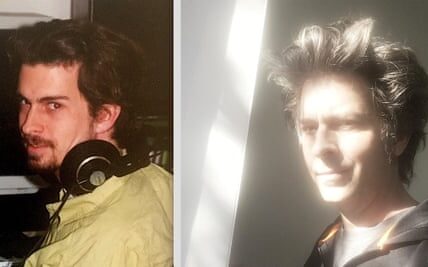Review of “Barcelona” by Mary Costello: Powerful glimpses into the experience of being in solitary confinement.

W
What can be accomplished in a short story? In Mary Costello’s collection, there are numerous interactions with other writers, but one goal seems to guide her in particular. This is the ambition of the narrator in a Jorge Luis Borges story who catches a glimpse of the Aleph – the point in space that contains everything. In Costello’s own interpretation, it is “the tiny sphere that encompasses the entire universe, revealing every point, place, and action from every perspective and in every light.” In her second book of short stories – The China Factory, which was published over a decade ago – and in her two impressive novels since then, the writer from Galway toys with light and angles to create clever effects, constantly manipulating the surface tension. Although achieving this all-seeing clarity may be impossible, it does not diminish the value of attempting to do so.
The author’s characters, both male and female, from different time periods, are often on the move but also frequently confined. They might be stuck in an auditorium, on a train like the Eurostar, or in a car, accompanied by someone whose reality they cannot understand. In the story “My Little Pyromaniac,” which has elements of the supernatural, a woman discovers that she lives next door to a former lover. As she confronts the life she could have had, she is driven to climb over his garden fence and perform an act that blurs the lines between saving and sabotaging him. The idea that these two characters are physically close yet emotionally distant, never speaking or acknowledging each other, yet still feeling intense emotions and almost resorting to violence is a powerful concept. It shows that their relationship continues through unspoken and irresistible means.
In other places, characters struggle with difficult decisions, often overcome by both horrified and horrifying feelings of compassion. In various stories, this stems from the treatment and killing of animals for human purposes, particularly in “At the Gate” where a woman attends a literary festival with her husband to hear JM Coetzee speak. The woman, also named Costello and a fan of Coetzee’s work, is struck by the fact that one of his characters shares her name. However, she is left speechless by the writer’s presence and unable to convey the significance of his words to her impatient husband. This leads to a mental breakdown, a recurrence of her past illness, which causes her to see visions of animals waiting to be slaughtered. Some may see this as an excess of empathy, while others may view it as a simple acknowledgement of reality.
None of these pieces make for comfortable reading; Costello’s writing is insistent, precise and unsparing. Everyday acts and ordinary lives are infused with a sense of the skull beneath the skin and of a catastrophe held tautly at bay. In the collection’s longest story, and perhaps its most skilful and affecting, The Choc-Ice Woman, the catastrophe has come to pass and we are witness to its painful absorption.
Frances is transporting her brother’s remains from a hospital in Dublin to her family’s farm in Kerry, where she currently resides with her husband, Frank. In the midst of conversing with the undertaker, she reflects on the enigmatic individuals who have played significant roles in her life. This includes her twin brothers, one active and robust, the other reclusive and now deceased; Frank, whose tranquil demeanor masks a hidden past of childhood mistreatment; and the writer Robert Musil, whose stories of illness, death, and love have shaped her perspective on life.
The story’s gradual accumulation of sentences raises the question of whether her stoicism has transformed into a self-destructive determination. As the hearse enters an empty yard and Frank emerges, the closing lines are enigmatic and intricate: “For a moment, everything was dark. Then a light flickered on and a door opened. And from behind the building, Frank’s silhouette emerged. As he drew nearer, it seemed as though he wasn’t getting any closer. She strained her eyes in the darkness. Soon, she thought, I will be able to see his face.”
Source: theguardian.com


